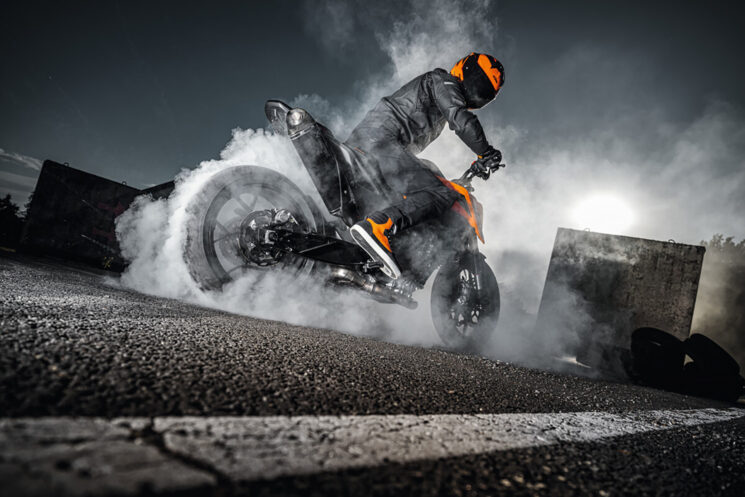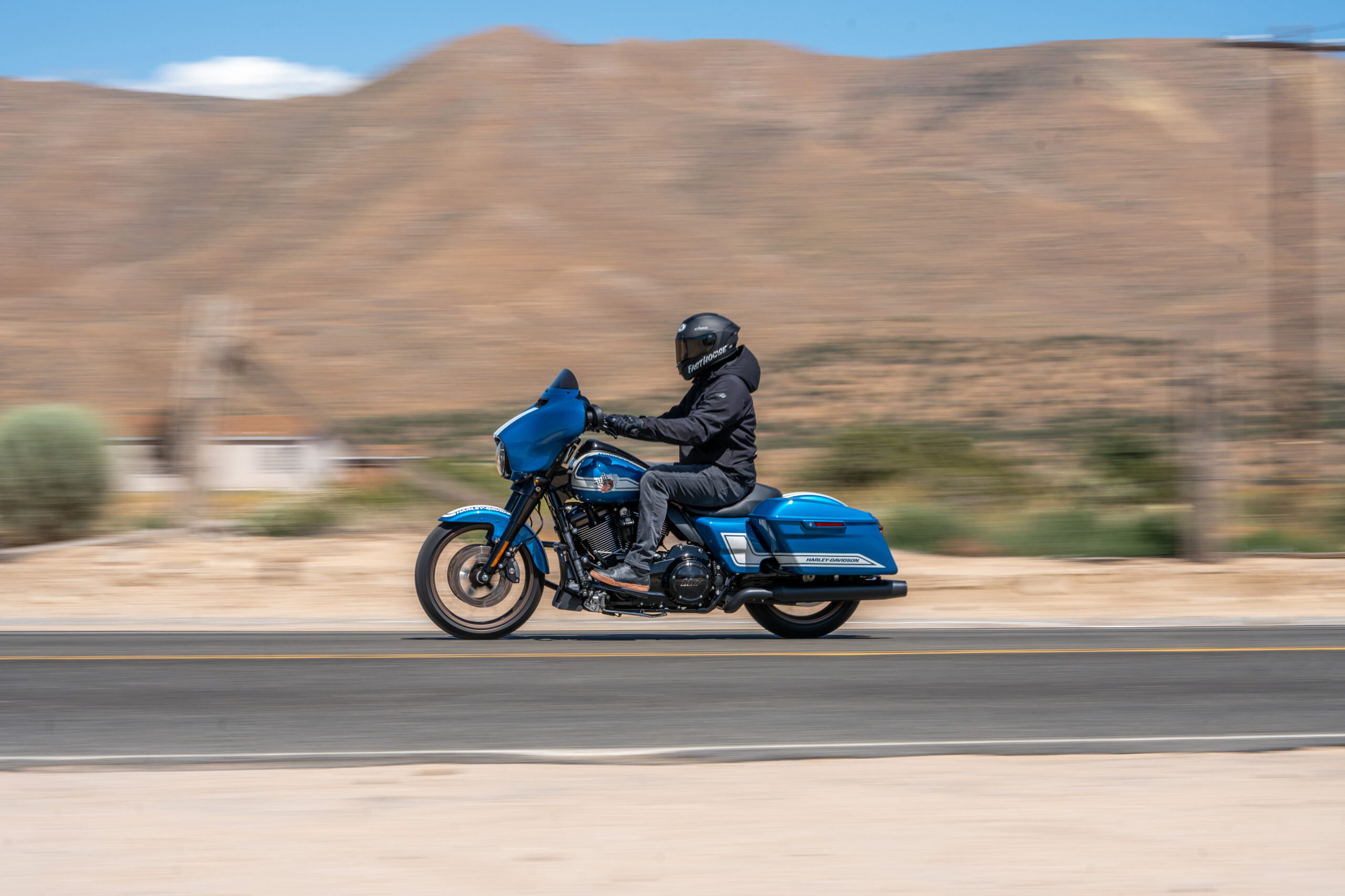

Gearing up for a road trip with the right stuff is key to a good or shitty experience. We’ve had […]
The post Cool Motorcycle Riding Gear from Alpinestars appeared first on Hot Bike Magazine.


Gearing up for a road trip with the right stuff is key to a good or shitty experience. We’ve had […]
The post Cool Motorcycle Riding Gear from Alpinestars appeared first on Hot Bike Magazine.

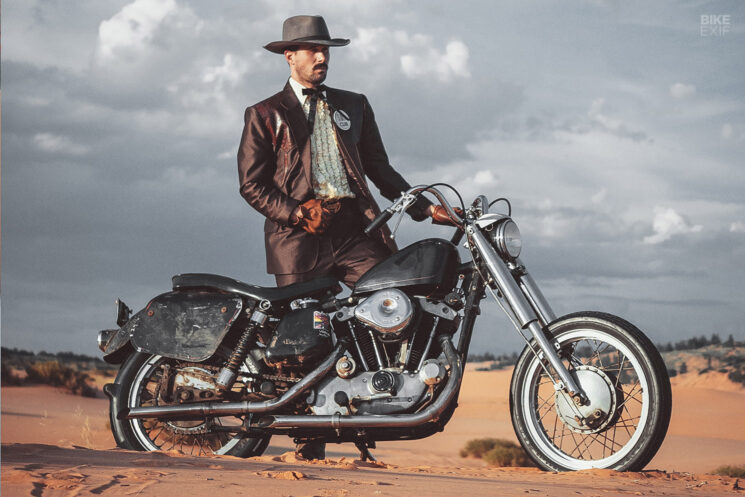
Motorcycles are fun, right? Having fun is one of the most important aspects of motorcycling. There really is no other excuse for throwing our fragile meat sacks atop a steaming engine with wheels and rocketing through space like a game of Galaga, sans lasers and no extra lives. It’s fun.
That’s where Bixby Moto comes in. Bringing a bit of levity to the often overly-serious culture of motorcycling. To break up the monotony of scowling mugs, airbrushed flames, and duck faces. So we decided to dig a little deeper and found the opportunity to catch up with Drew of Bixby Moto to ask him about the meaning of dreams, a little fashion advice, and what bull testicles taste like. Also, our joke funnel was a little dry.
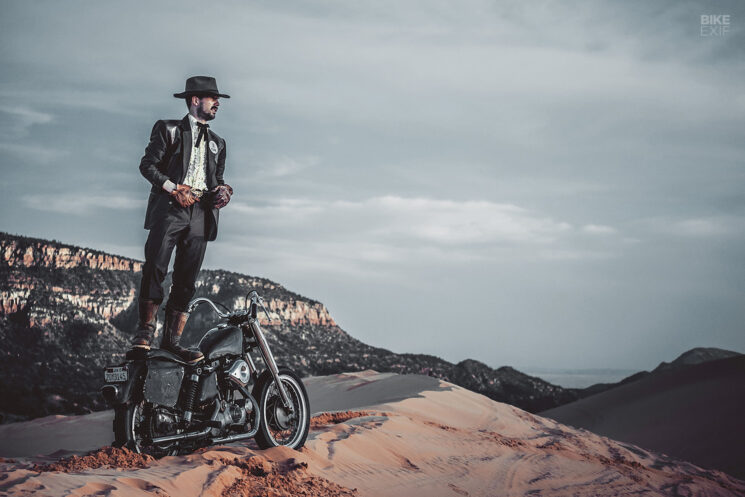
Who are you? Jeez. I can’t think of a more philosophical question. Just a dude with insecurities, a love for motorcycles, and a warped sense of humor. My name is Drew. I have a scooter shop in California. I make just enough money to pay for my adventures and motorcycles.
Right, that question didn’t seem as deep when I asked it, but looking at it now gives me anxiety. What is Bixby Moto? It’s a reminder to myself and every homophobic, sexist, racist person: try being a little less grumpy. Can you tell I was picked on?
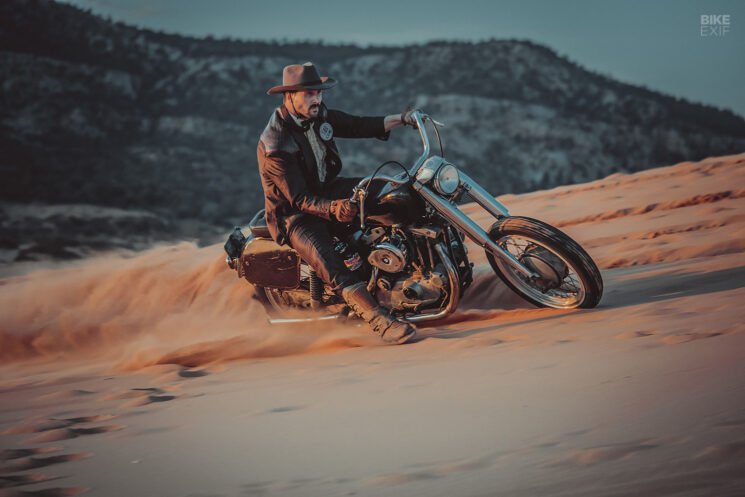
Do you have any interesting, scary, or weird recurring dreams? I have one where I lose all my teeth. I’m in the bathroom and I just start lightly pulling them out, one by one. I’m staring in the mirror as I pluck them like autumn leaves until they’re all sitting in a bloody pile in the sink. You think that means something? That sounds absolutely frightening! I mean it’s a great horror movie synopses, but rainbows and unicorns sound much more pleasurable. I can’t even come close to your imagination. Should I be worried? All I ever seem to dream about is my wonderful girlfriend. She floats around on clouds of hugs. Nothing bad ever happens and I wake up smiling. I think they call it love, I don’t know.
Why did you start Bixby Moto? I never saw anyone having fun at motorcycle events. Lots of finger-pointing and judgment. I started to get wrapped up into the culture. Looking cool eventually took a toll and I caught myself living up to every motorcycle culture trope. I wanted to reduce my expectations to a simple rule. Have fun. Hence the Bixby Moto motto: “Fun Time Only”.
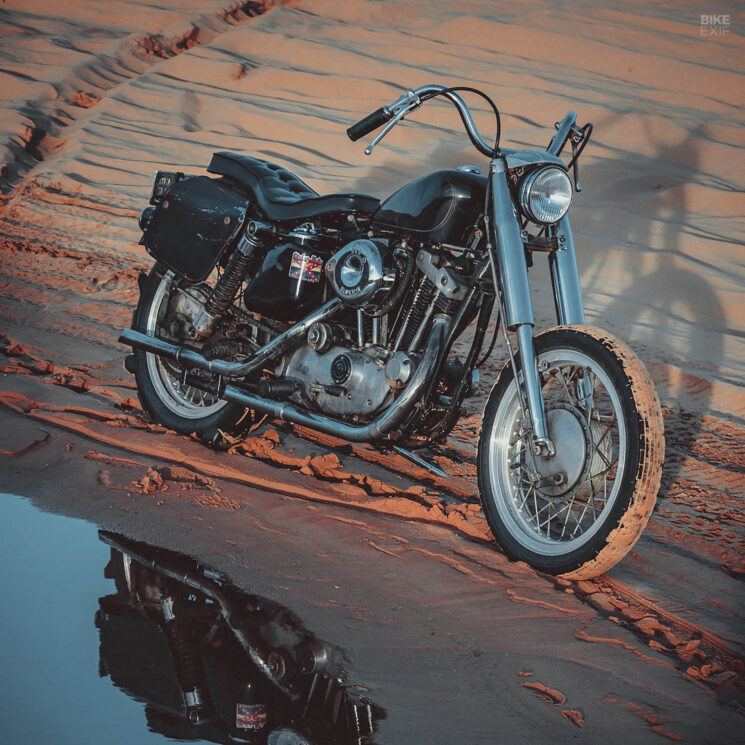
What’s the weirdest thing you’ve ever eaten? I ate rattlesnake once. I’ve also unintentionally eaten dirt and probably a lot of spiders. Potty humor aside, I’ve eaten bull testicles. They aren’t as good as you’d think. Rattlesnake sounds way more Gucci.
Yeah, it’s pretty Gucci. Rattlesnake is sort of like a cross between a fish and a chicken. It tastes pretty good doused in BBQ sauce. Then again, spiders probably taste good doused in BBQ sauce. What do bull testicles taste like and how were they prepared? They’re deep-fried and bland. My whole life has been finding an excuse to dip things in BBQ sauce. Thirty years now and I’m getting creative.
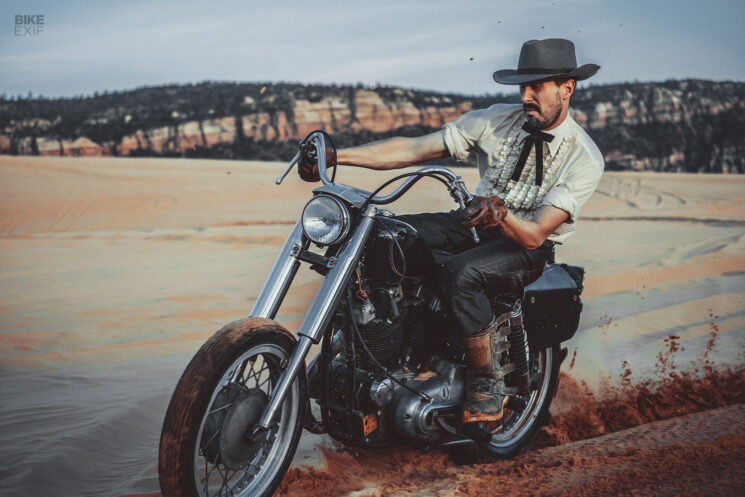
When you ride a motorcycle, do you feel the eagle spirit of freedom enter your body and allow your soul to take flight? Truly, motorcycles are a magical wonderland that most will never know. It elicits powerful emotions. A sense of pure joy! But heaven is “ghost riding” your motorcycle into a brick wall, shrugging your shoulders, and walking away. I’d rather have a handbag than a showbike. Even better, a scooter.
I hear you, sometimes a showbike doesn’t have any stories to tell. Where do you get the tight threads? You’re always sporting some dope getup. Most men have wandering eyes, but I’m not watching for beautiful women. It’s rhinestones that get me hot and bothered. I buy it when I see it. Thrift stores are the best bang for your buck. Farm towns have great cowboy hats and western suits.
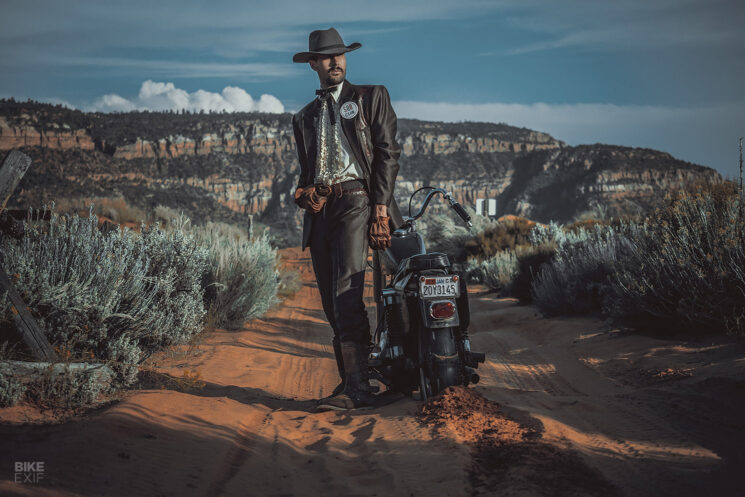
Any fashion advice you could give me? That’s easy. Wear something that makes you feel embarrassed. Feeling like an idiot is comparable to a force field. There isn’t anything anyone can say that’s worse than how you feel. It sounds illogical, but it works. If all else fails: What would Liberace do?
What is that killer ride you took to punish in the dunes? A stock ‘71 XLH900 Sportster. It doesn’t do anything particularly well, which is probably why I love it. My first choice would have been to get sloppy in the sand dunes with a Gold Wing. But I don’t have one of those, so I took the worst bike I own.
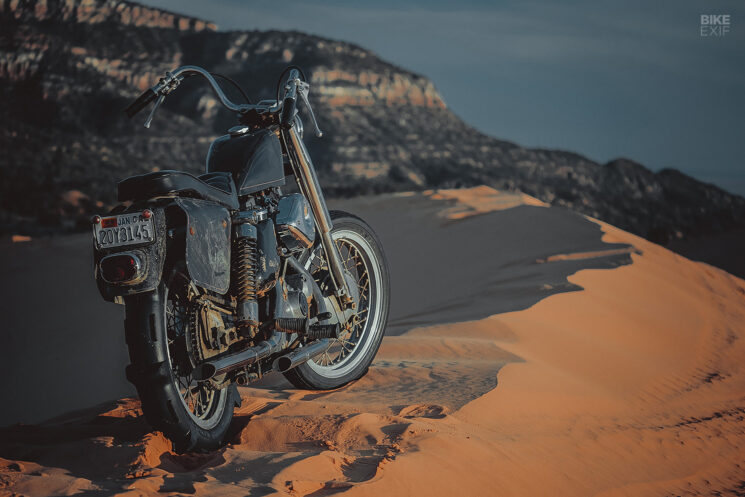
How’d it handle with those massive paddles on it? It was slow, heavy, and handled like seaweed in high surf. The key to sand is floating gracefully across the surface. But I ain’t graceful and I like a challenge. The paddle tire probably didn’t hurt, but 50 horsepower from a boat anchor was less than ideal.
Then again, NASA put us on the moon two years before Harley Davidson built my bike. What was I complaining about again? The short answer: I had it pinned the whole time.
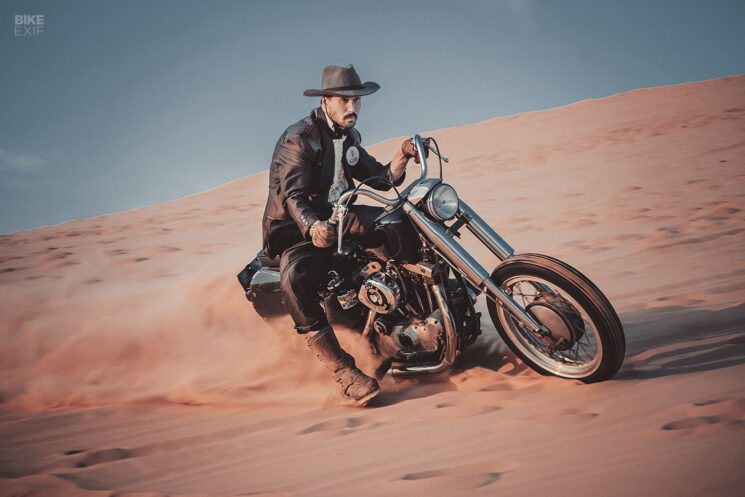
What was your first bike? I was just a kid when my Dad bought a Suzuki DS80 to learn on. He took my brother and I to a sand washout in the desert for our first lesson. I got 20 feet and started crying. It was the most terrified I’ve ever felt. I was ready to quit, but Dad was supportive. He wouldn’t let me give up. Now I feel like I could ride anything anywhere. Thanks, Dad!
Where is Bixby Moto located? 11211 Slater Ave., Fountain Valley, CA, 92708. That’s quite literal, but anyone who wants a sticker can send me a postcard with a return address and I’ll mail out something hella bespoke.
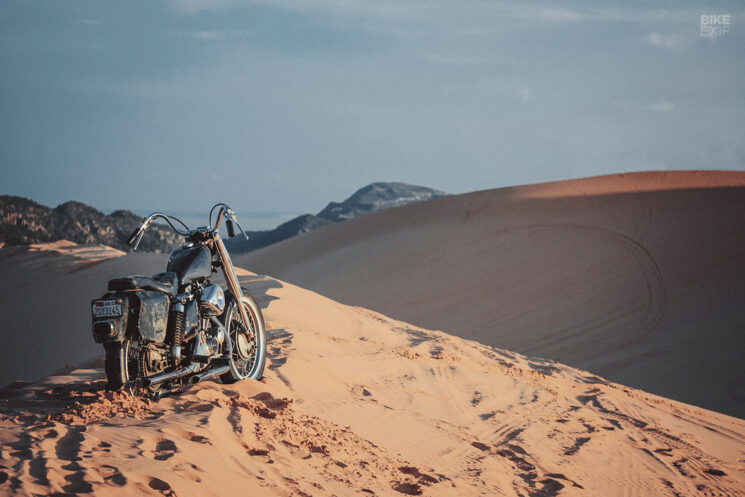
This article first appeared in issue 21 of Iron & Air Magazine, and is reproduced here under license | Interview by Gregory George Moore | Images by Christopher Hopkins
Bixby Moto | Instagram

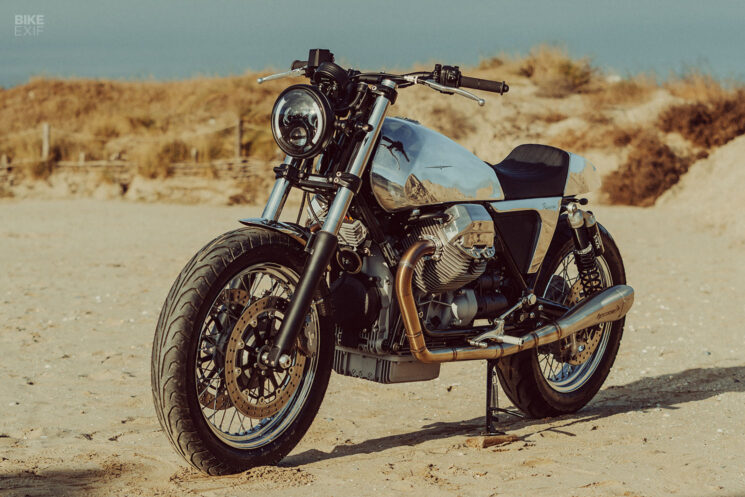
The uncomfortable truth about custom motorcycles is that for every good one built, there are dozens of bad ones. All too often you’ll come across custom bikes that have been crudely cobbled together with no regard for good taste—or safety, even. This 1999 Moto Guzzi California was one such bike, until Massimo Rinchiuso rescued it.
“The California was previously customized using poorly matched parts, with many malfunctioning parts and poorly made modifications,” says Massimo, who runs Fuchs Workshop as a one-man band in the vibrant city of Ravenna, in Italy’s Emilia-Romagna region. “The bike was not only really ugly but also potentially dangerous.”
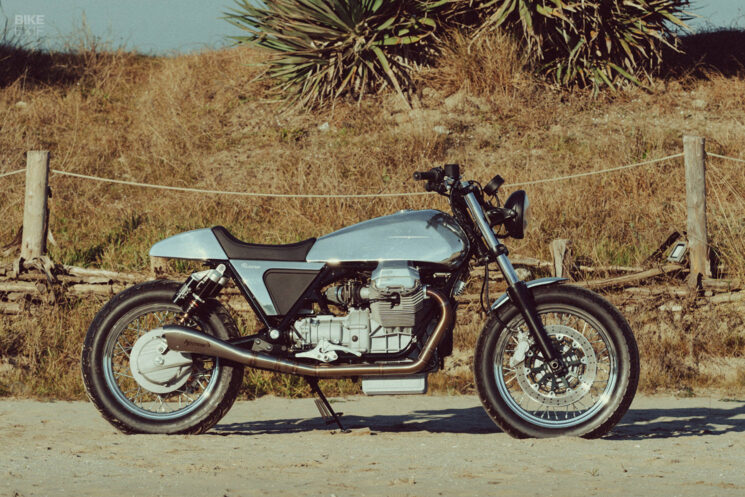
Massimo’s client is a long-walks-on-the-beach guy, so the Moto Guzzi’s torque twin-cylinder motor suits him well. He handed the bike over to Massimo to make it not only beautiful to look at, but usable and safe, too. The idea was to shed visual weight and turn the chunky Moto Guzzi California into a laid-back beach tracker.
The bike’s easygoing appearance belies the amount of work that went into it. Massimo’s first job was to create a harmonious bone line—which meant making extensive changes to the frame. Then it was time to spec the California with running gear to suit its new stance.
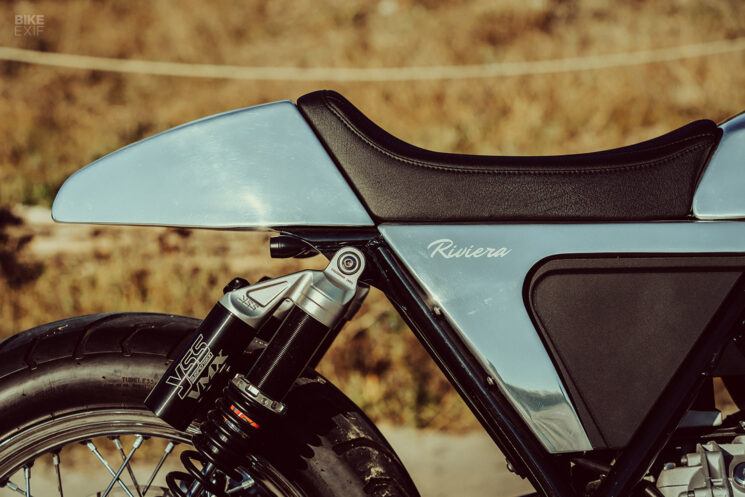
The OEM Moto Guzzi forks were upgraded with a cartridge kit from YSS, adding full adjustability, and new YSS shocks were fitted out back to pick up the California’s tail. Massimo retained the original wheel sizes (18F/17R), but swapped the original units for chromed Borrani hoops.
He turned his focus to the brakes next. The front hub was modified to host a second brake disc, with Brembo calipers doing duty at both ends. The setup also includes custom-made caliper mounts and braided hoses.
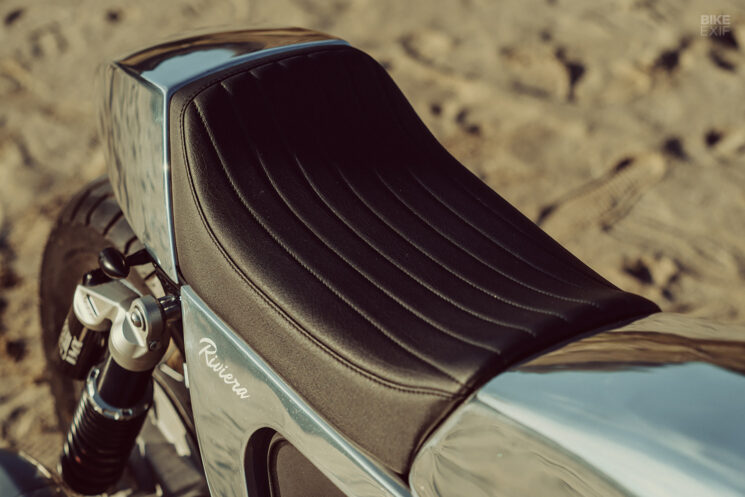
As you can tell, all of the Moto Guzzi California’s original bodywork was binned. Massimo fabricated a new set of aluminum pieces from scratch, starting with a tapered fuel tank and matching tail bump. A trimmed front fender and triangular side covers round out the set.
The side cover sits on custom mounting tabs, while the tail features a neatly recessed LED taillight that Massimo designed and manufactured from scratch. A stylish pleated saddle offers an adequate level of comfort.
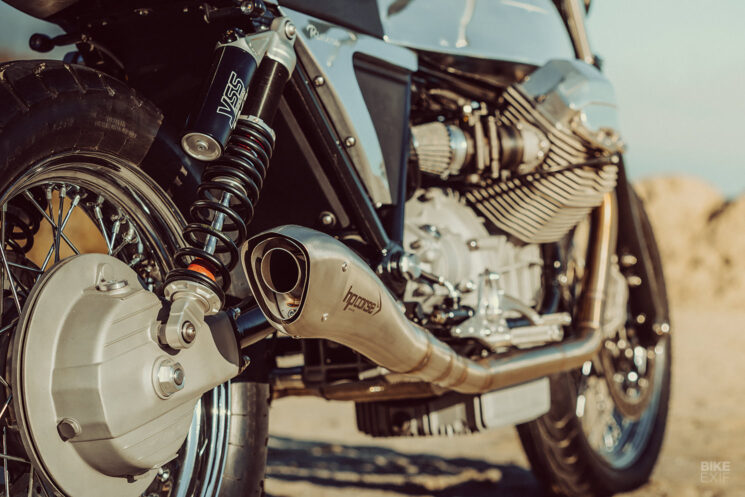
Going deeper, the California’s 1,064 cc V-twin engine was rebuilt with several improvements. It now sports polished intake ducts, a lightened crankshaft and flywheel, and an upgraded camshaft. Massimo installed K&N pod filters, fabricated a new stainless steel exhaust system with HP Corse mufflers, and remapped the ECU to optimize performance.
Massimo also rewired the Moto Guzzi from scratch—partly to accommodate the new bodywork, and partly because the existing wiring was a ticking time bomb.
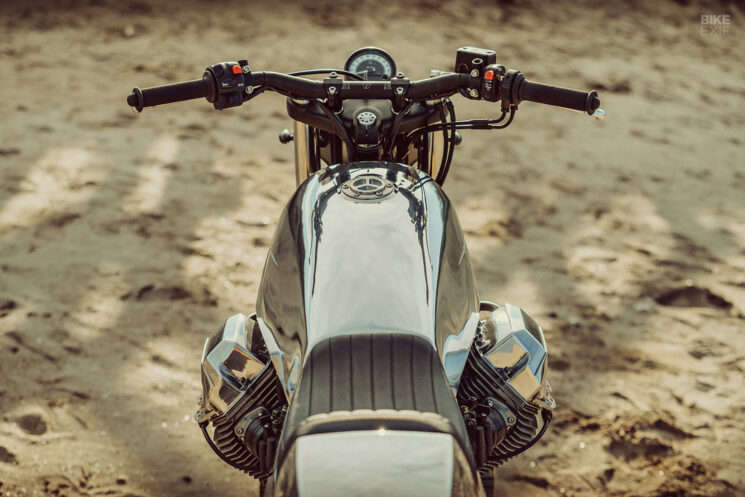
A tidy cockpit complements the rest of Massimo’s judicious changes, featuring tapered handlebars on new bar clamps. The switches and clutch perch are Domino parts, while the front brake’s master cylinder comes from Brembo. An LED headlight from Highsider sits out front, mounted on custom-made brackets.
There are subtler details to appreciate too—like Massimo’s judicious side stand mod. “The lower left part of the frame was modified to eliminate the very ugly original side stand—mounting a much more discreet one in a rearward position,” he explains.
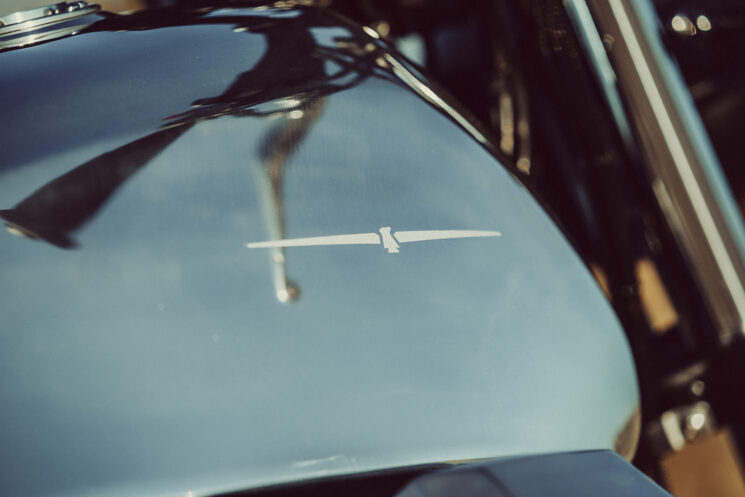
Massimo finished the Moto Guzzi California off by polishing the aluminum bits, adding subtle graphics, and hitting the frame with a fresh coat of black. Delicate Moto Guzzi eagle motifs adorn the tank, while the side covers are emblazoned with the bike’s nickname; ‘Riviera.’
“I chose that name because I associate this motorbike with the relaxation that a beautiful sailing boat can create when it travels through calm seas on a sunny day. And because Fuchs Workshop is located on the Riviera Romagnola—the land of motors.”
Fuchs Workshop Facebook | Instagram | pics by Christian Fussi
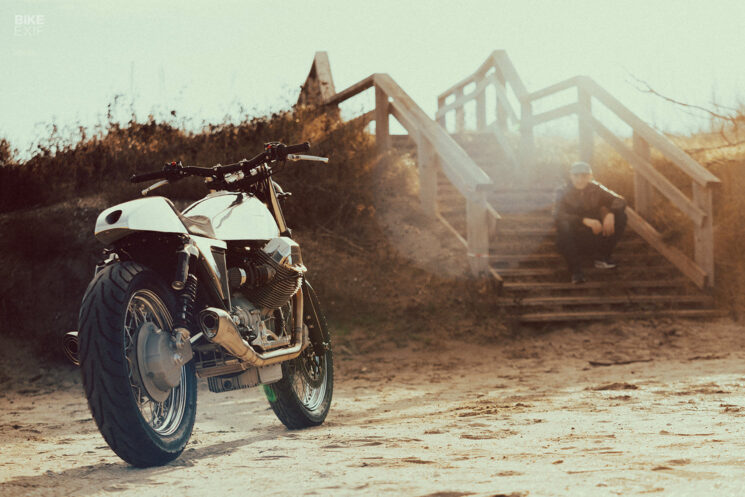
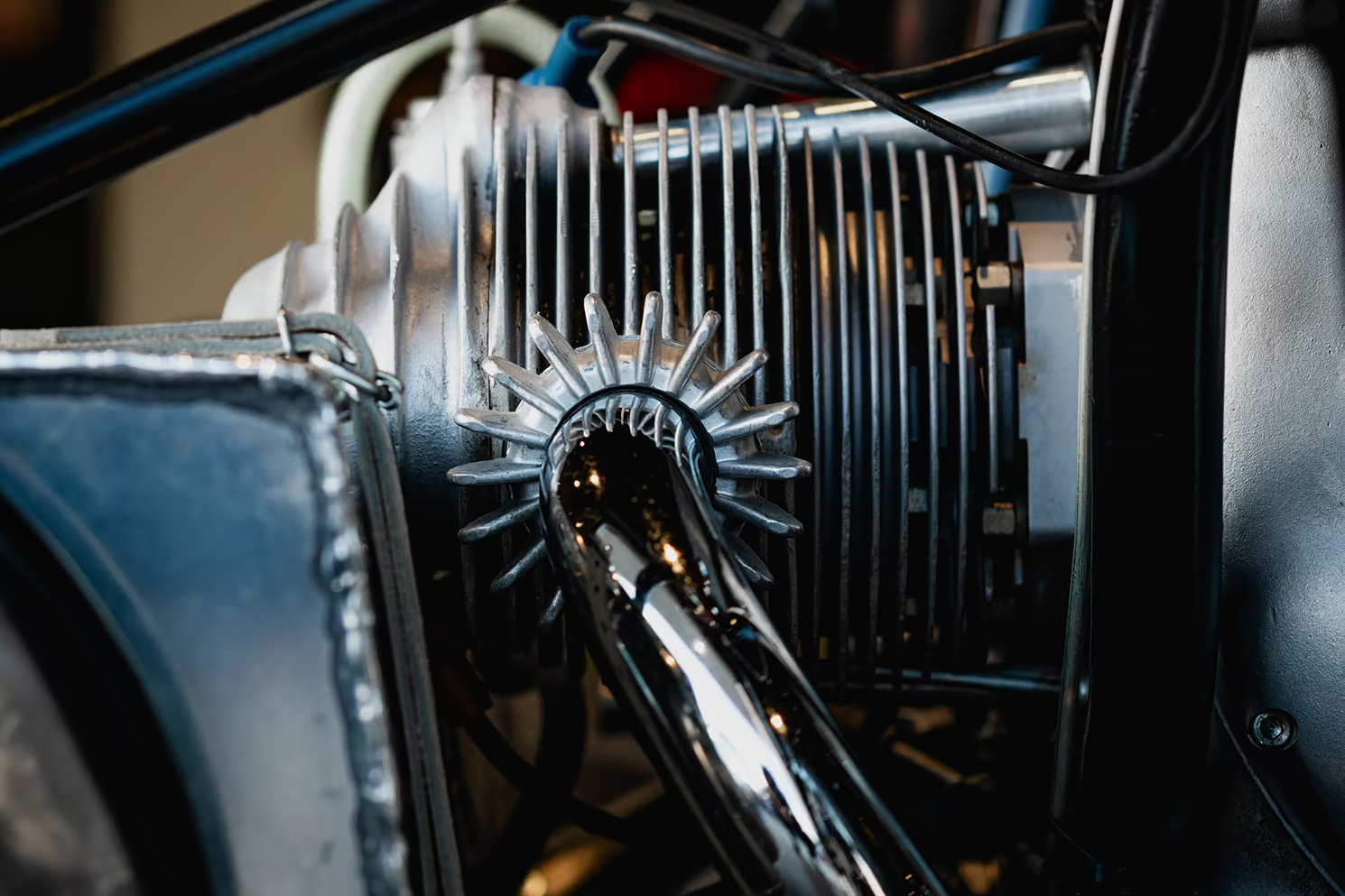
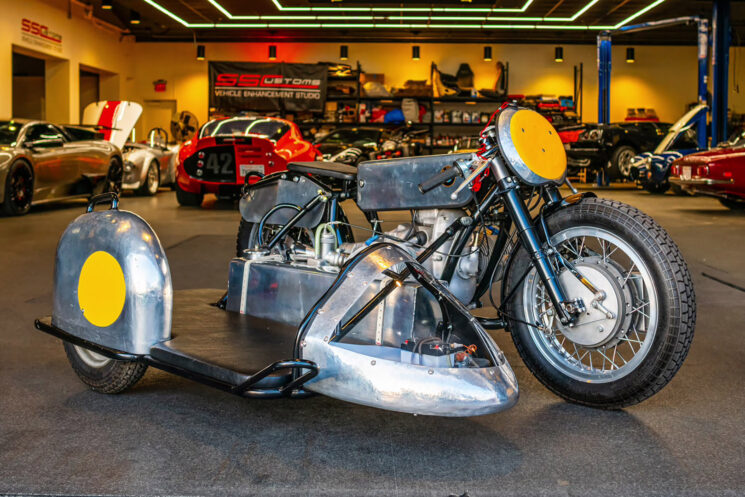
Everybody loves an underdog story, and besides being one of the most influential motorcycles of its kind, this BMW-based sidecar racer is probably the most unlikely hero on three wheels. It was constructed and piloted by a German privateer named Helmut Fath, and spawned the next generation of sidecar racers known as ‘kneelers.’ A holy combination of old parts and new ideas, Helmut Fath’s BMW RS sidecar was pivotal to his rise to prominence in sidecar racing and his historic toppling of BMW’s championship reign
Born in Ursenbach on May 24, 1929, Helmut Fath followed in his father’s footsteps with an immediate interest in motorcycles. A mechanical education at the Max Planck Institute and formative years working for BMW strengthened his fascination, and Fath found his way onto the race track in 1949. It’s said that Fath spun out and wrecked that day Lorsch, subsequently selling his 250 cc racer. Seems like a fitting precursor for the man who’d later become the king of sidecar racing.
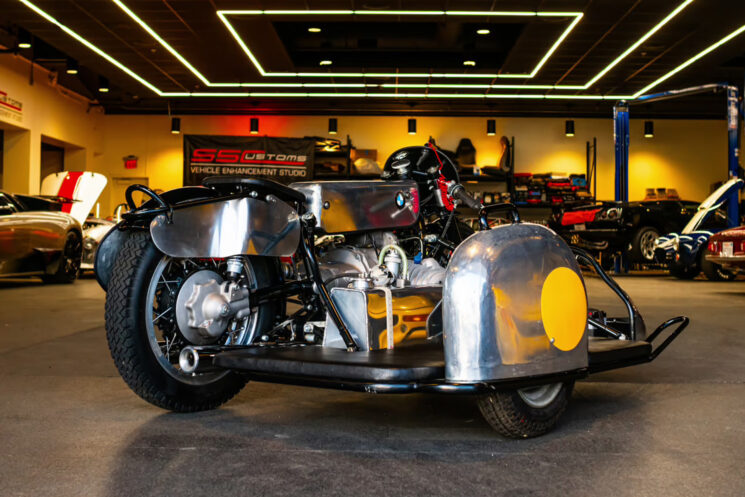
Shortly after, Fath borrowed a sidecar rig to get across town and found himself smitten after mastering the basics. He soon purchased a rig of his own and once again found himself at the race track, this time with greater success.
While it was obvious to Fath’s friends that he’d found his calling, he was unwilling to compete at anything other than a hobbyist level. Fath spent the 1952 season maintaining a 500 cc BMW race engine for a friend, and at its conclusion, the engine’s owner urged Fath to put the engine to good use. Soon after, a customer walked into his shop with a frame and a racing sidecar and Fath found himself fresh out of excuses.
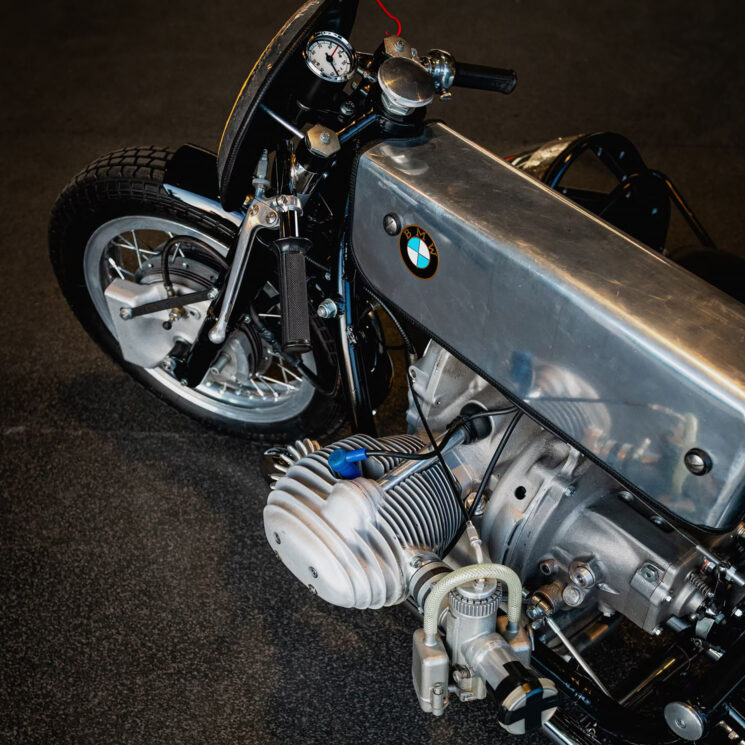
Fath’s righthand man (quite literally in this case) was Alfred Wohlgemuth, the owner of the aforementioned sidecar and chassis, and they found success together immediately at Lorsch. Despite a hefty disadvantage in equipment and experience, the fledgling privateers piloted their hybrid creation to a third-place finish, and a record soon after at the Nürburgring. Sustained success would qualify the unlikely duo for an expert competition license, and pit them against the best factory-backed racers for the 1954 season.
While Fath and Wohlgemuth had a charmed introduction to the sport, it was a bridge too far to assume their first machine could compete with BMW’s works racers, and Fath bankrupted himself buying a BMW RS racer from a close friend. It’s here that Fath’s genius showed, as he outfitted the bike with diminutive 16-inch wheels and built a low streamlined sidecar to go along with it.
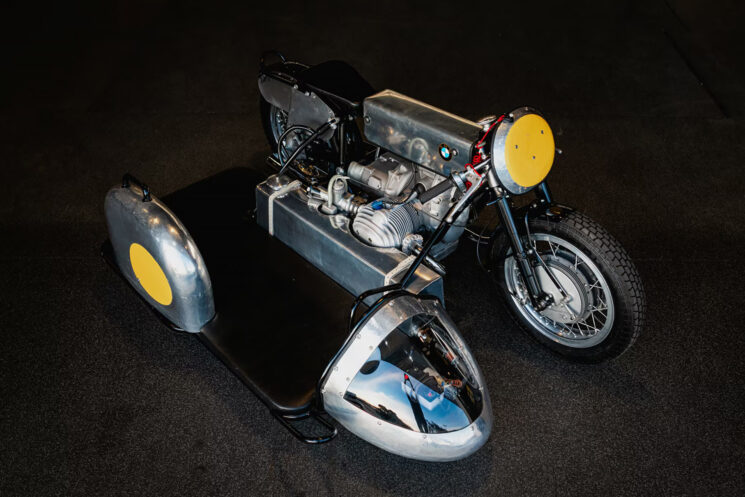
This new rig was innovative in several ways, most prominently in that the fuel tank was moved from the bike to the sidecar. With its short stature and weight as close to the pavement as possible, Fath and Wohlgemuth’s racer pioneered the next generation of ‘kneelers,’ and the bike was immediately competitive. In the following years, Fath would develop a proprietary fuel injection system, be voted Germany’s best privateer rider and spend his last dollar on a new BMW racing engine to replace the worn-out original.
The pieces would all come together for Fath and Wohlgemuth in 1960, when the duo clinched the podium in the French, British, Belgian, and German GP races and were crowned world champions—as privateers, nonetheless. Two men who had met by chance just a few years earlier had come up against the best factory racers and triumphed on a home-built machine.
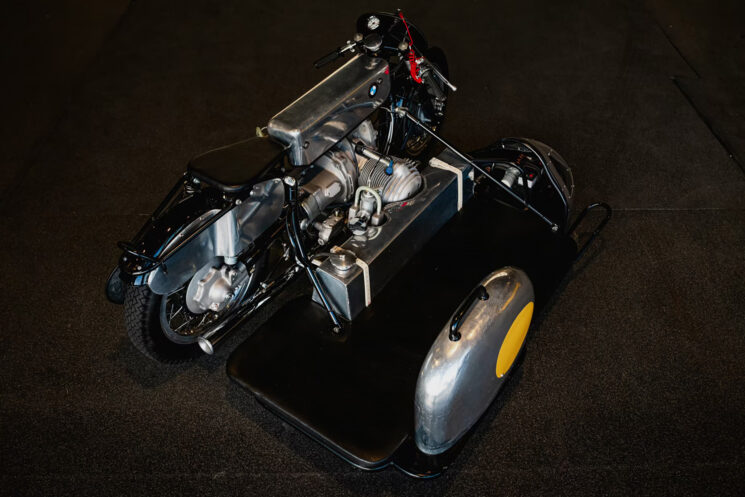
Helmut Fath’s story was far from over, but the next chapter in his story marked a low point. A wreck at the Nürburgring in 1961 claimed the life of Alfred Wohlgemuth and cost Fath one of his feet. Fath’s recovery spanned five years, and in his idle time, he developed a proprietary high-revving four-cylinder engine with the help of Dr. Peter Kuhn. With engineer Horst Owesle manning the sidecar, Fath piloted the shed-built bike to a world championship in 1968—marking the first time a BMW-powered bike didn’t win the title since 1953.
While the ledger of Sidecar World Champions is home to many Germans, including duos with more victories to their credit, the underdog story and legacy of innovation surrounding Helmut Fath makes him one of the most significant riders of the sport. And that makes Mecum’s Lot S207 a fascinating study.
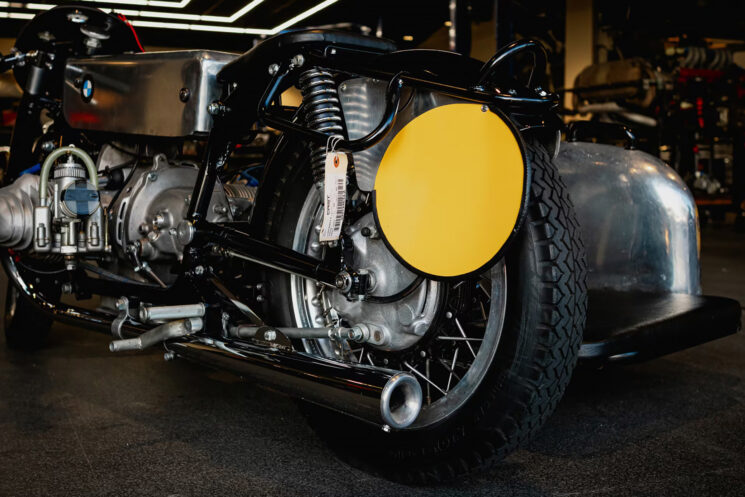
While Mecum published only a few short bullet points on the motorcycle, this BMW RS 54 sidecar hails from a momentous period in Fath’s racing career. We know from the bike’s historical passport that it was used by Fath from 1958 to 1960, and translating the document reveals that the chassis is from an earlier Type R69 (used from 1955 to 1960). This would suggest that Lot S207 is the motorcycle that Fath and Wohlgemuth rode in their championship-winning 1960 season, but you’d think it would be advertised as such.
To get to the truth of the matter, you’d likely have to get boots on the ground at Mecum’s Las Vegas 2025 motorcycle sale to review the documentation they have on file. Regardless, we’re talking about a racing sidecar of the highest significance, which was displayed at the BMW Car Club of America Foundation in 2023.
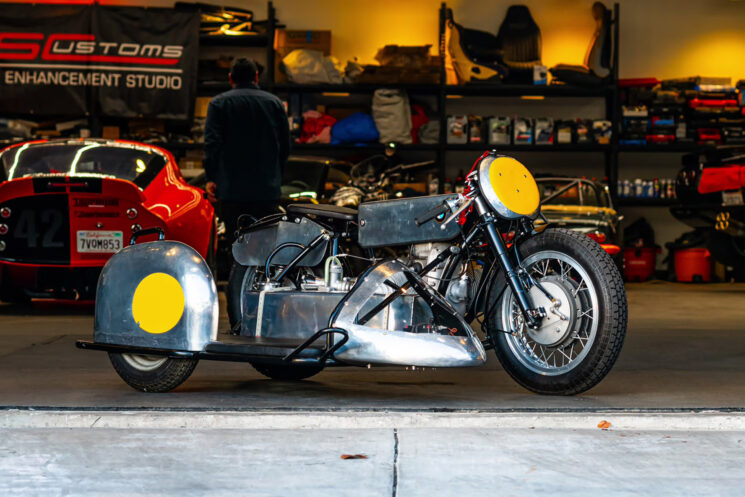
This priceless piece of sidecar racing history is offered without a pre-auction estimate and will be crossing the block on Saturday, February 1, 2025.
Source: Mecum
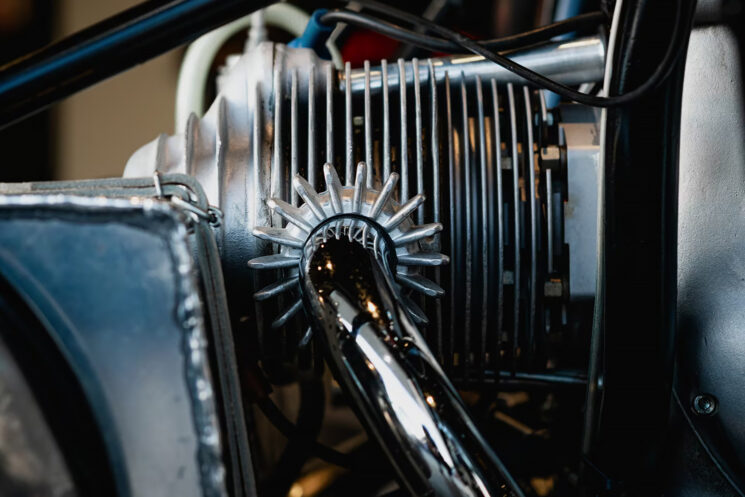
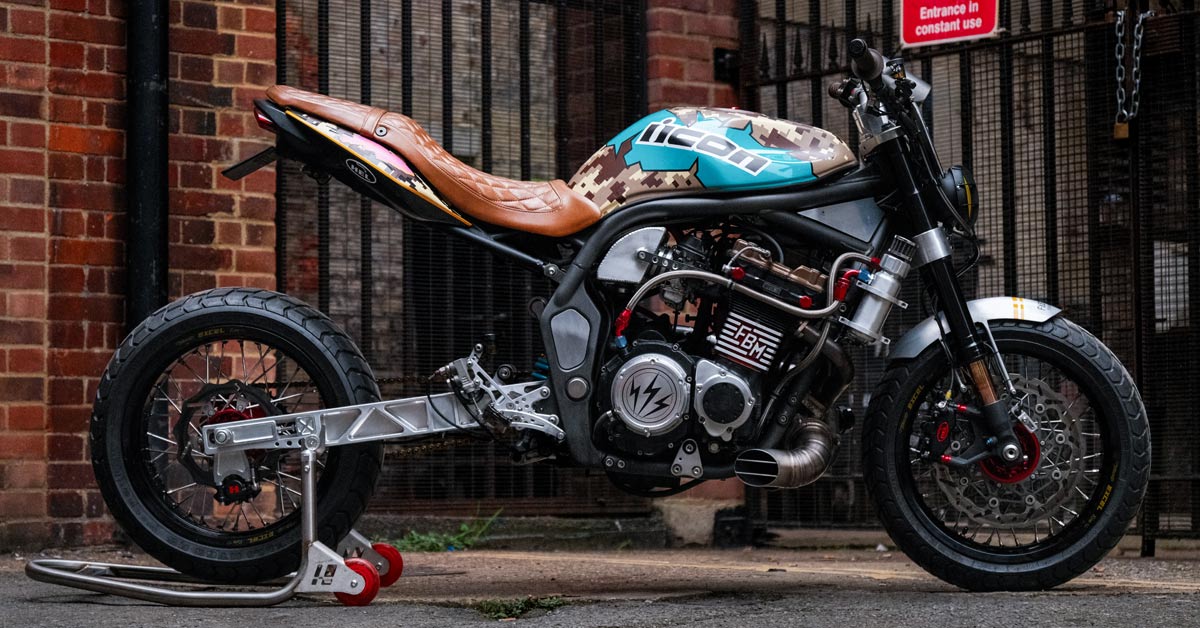
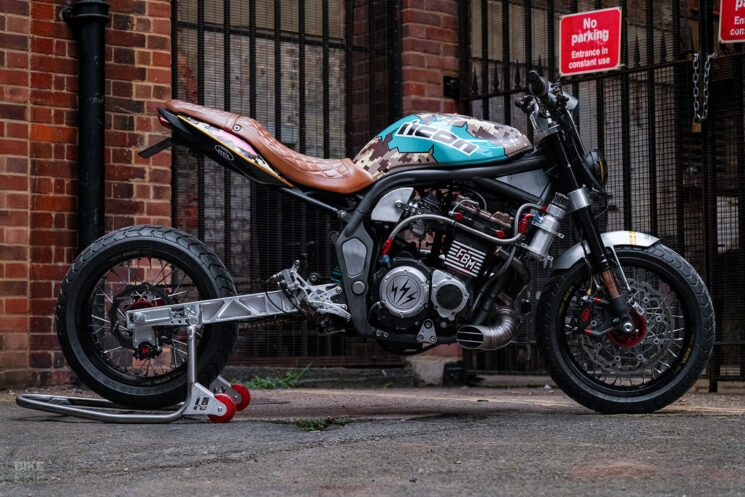
“Boost is addictive,” says Matt Coulter of Sticky’s Speed Shop. “Insane power delivery and tunnel vision at the same time. I rode a turbo ‘Busa and knew I had to have a turbo bike.”
When Matt makes his mind up it doesn’t take things long to happen. The UK-based builder parted out an Aprilia RSV-R he was trying to sell for a turbocharged Suzuki Bandit 1200, and started a long, expensive journey.
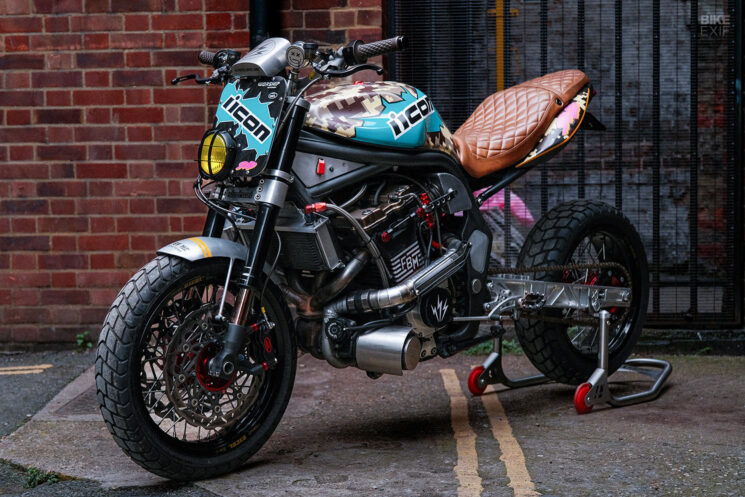
Despite its laughably lame name, the Bandit 1200 became a cult bike in the UK in a way that was never really replicated elsewhere. Following the 600 cc Suzuki Bandits, and smaller 250s and 400s that were never officially imported, the 1200 launched in the UK in 1996 as a naked street bike. The half-faired version followed later.
At the time, the country was running low on affordable, unmolested oil-cooled GSX-R1100 engines, so drag racers and sprinters marched down to Suzuki dealers for these cheap, unflashy muscle bikes.
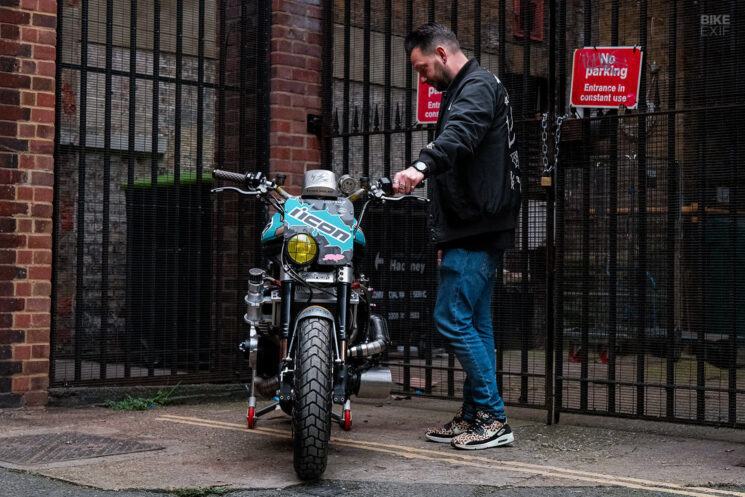
Some turbocharged them straight away—they knew these motors, and what they could take, inside-out. But turbocharged bikes are rarely hassle-free. Matt was over the moon with his blown Bandit… for exactly two weeks.
“Then it shat itself,” says Matt with some resignation. “The fuel pressure regulator failed, dumped fuel into the turbo and bottom end, and it spun the crank bearings.”
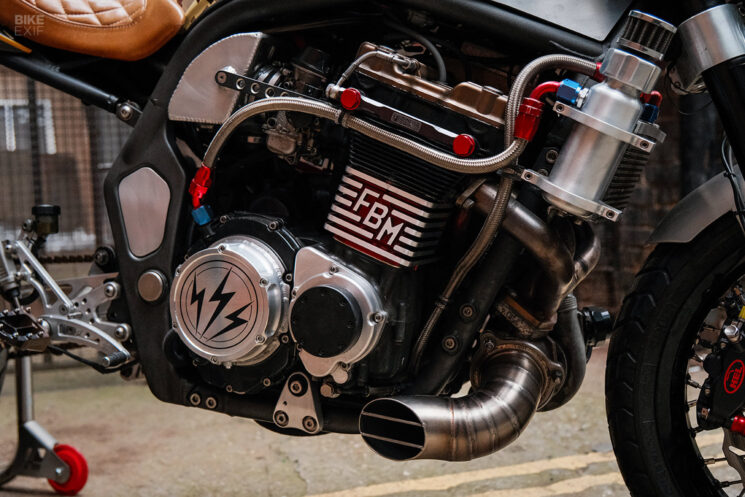
The engine went to the turbo specialists Fast By Me, who rebuilt it with new forged pistons, uprated rods, and one of their own billet drag blocks. “It gives improved oil flow, but it gets hot,” says Matt of the new block. “It’s not designed for London traffic.”
The turbo itself is a modified TD04—the kind used in loads of cars from Imprezas to Volvos—but this one has a fancy billet impeller. The engine breathes through the original bike’s rejetted CV carbs, which apparently work great on turbo bikes. Matt and Dave from Fast by Me made the slash-cut pipe, while Gary, a hot rod fabricator local to Matt, made the uppipe. The clutch is an Orient Express lock-up.
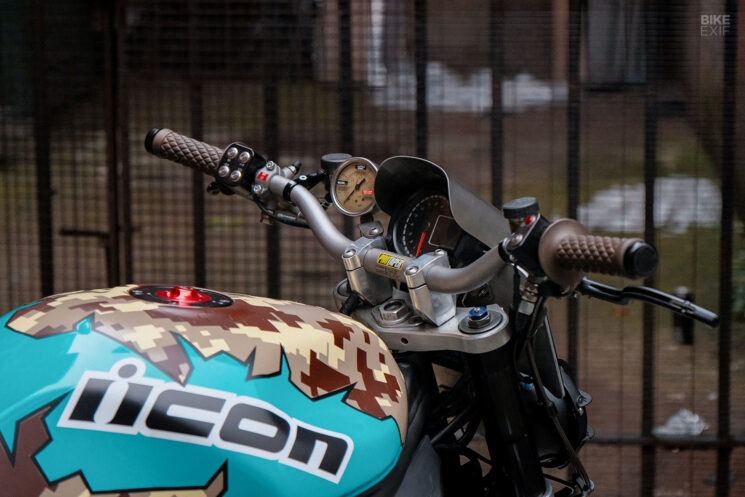
If you’ve seen any of Sticky’s Speed Shop performance customs, you’ll know he doesn’t follow the herd, or choose the more obvious crowd-pleasing style options that some builders rely on for likes and compliments. This is the bike’s fourth look in the 12 years Matt has owned it, and the second since it was nicknamed ‘Scud.’
“I painted it hearing aid beige and thought it looked like the desert camouflage of a US military Humvee,” he says. “Scud being the name NATO gave to a type of missile.”
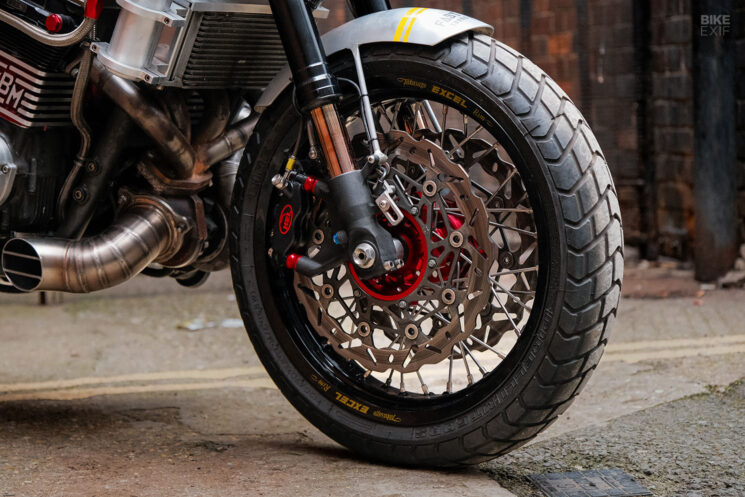
Let’s pick through some of the more unusual choices—like fitting a 200-plus-horsepower bike with these one-off Talon/Excel wheels and adventure bike rubber. “These are Dunlop Mutants, but I fitted Continental TKC80s when they first came out. The rear wouldn’t last more than 100 miles.”
That didn’t stop Matt from taking the Bandit on a track day at Brands Hatch. “It was raining and it would wheelspin in the four gears I’d dare use. I was just getting the hang of it when one of the oil lines came off…”
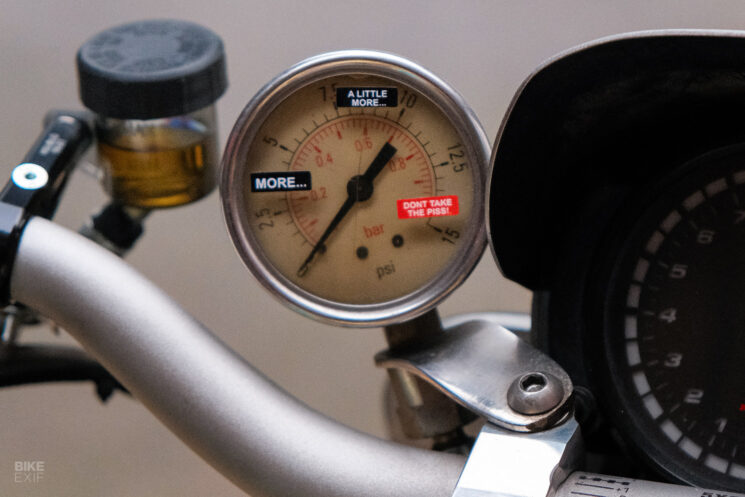
Then there was the time a pipe came off the turbo actuator and turbo boost went from 8 psi to 40, “The bike was spinning and wheelieing at the same time, then it span the rear tyre on the rim and ripped the valve out of the tube.” Tubed tires on a turbo bike? Talk about living dangerously.
The tail unit is from a Triumph Street Triple—there’s nothing wrong with that, but Matt had the seat pad covered in ‘controversial’ brown leather. “The old-school performance bike lot hate brown seats because they hate hipsters,” he says, taking the opportunity to wind them up.
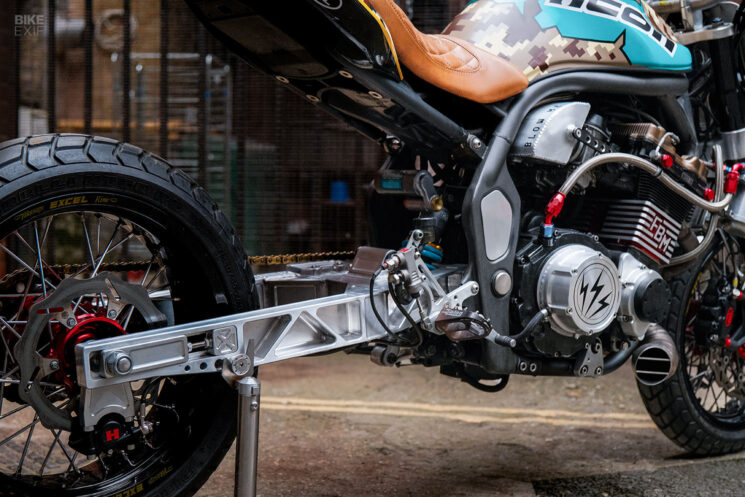
The most recent modifications include a full suite of Hel Performance brakes and a Steelheart Engineering billet swingarm. “The swingarm is the first one Steelheart has made from billet and they did it in two weeks for me as a big favor,” says Matt. A Nitron mono-shock offers rear damping, while GSX-R1000K4 forks suspend the front.
Matt has collaborated with English artist and illustrator Ryan Roadkill a number of times, so when Matt wanted some new graphics for the inaugural Worship Moto Show he gave Ryan a call. “The design was inspired by the Scud name, which is synonymous with the Gulf War to me,” says Ryan, “The band of yellow around the front mudguard is suggestive of the red or yellow band around the missile warhead the Scud launchers carried, while the teal green is a nod to Soviet-era vehicle cockpits.”
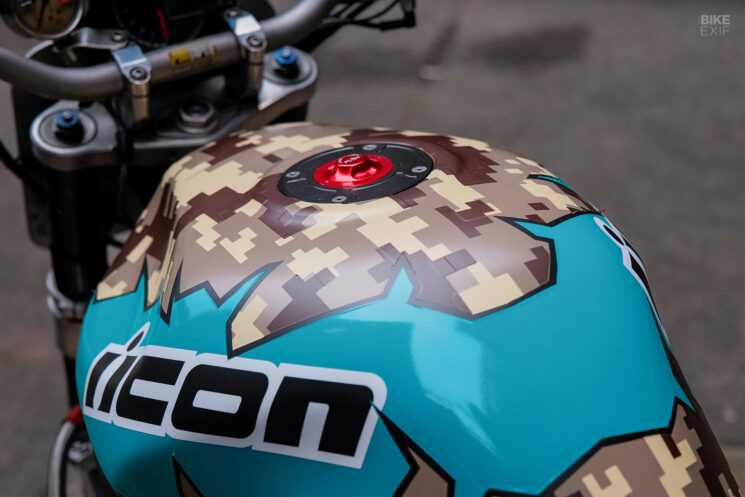
“I replicated a desert camo pattern for the main body of the design, but Matt had the cool idea of keeping the color but making it a digicam instead. The tear-through is taken from the same shapes I used on the Icon Motosports banner at the show.”
The graphics were made and laid on by Matt’s graphics firm, Image Worx. Scud is waiting for another round of tweaks before being unleashed on the dual carriageways of Essex again. If there’s one thing Matt has learned over 12 years of turbo bike ownership, it’s “Going fast is a slow process.”
Sticky’s Speed Shop Instagram | Images by Thomas Kettlety
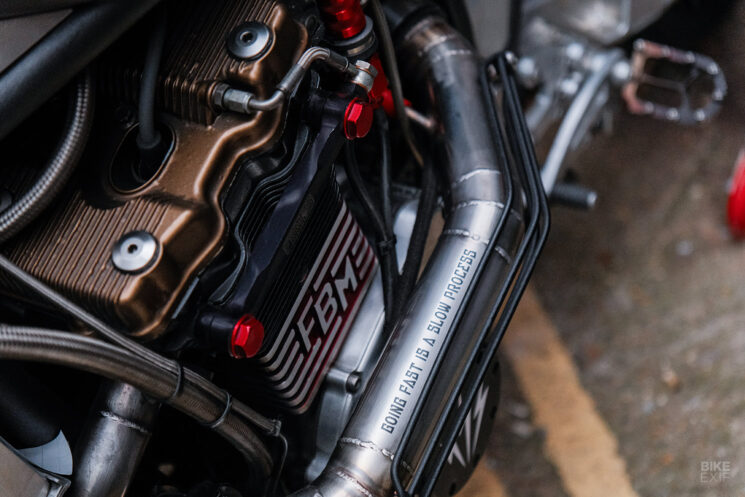
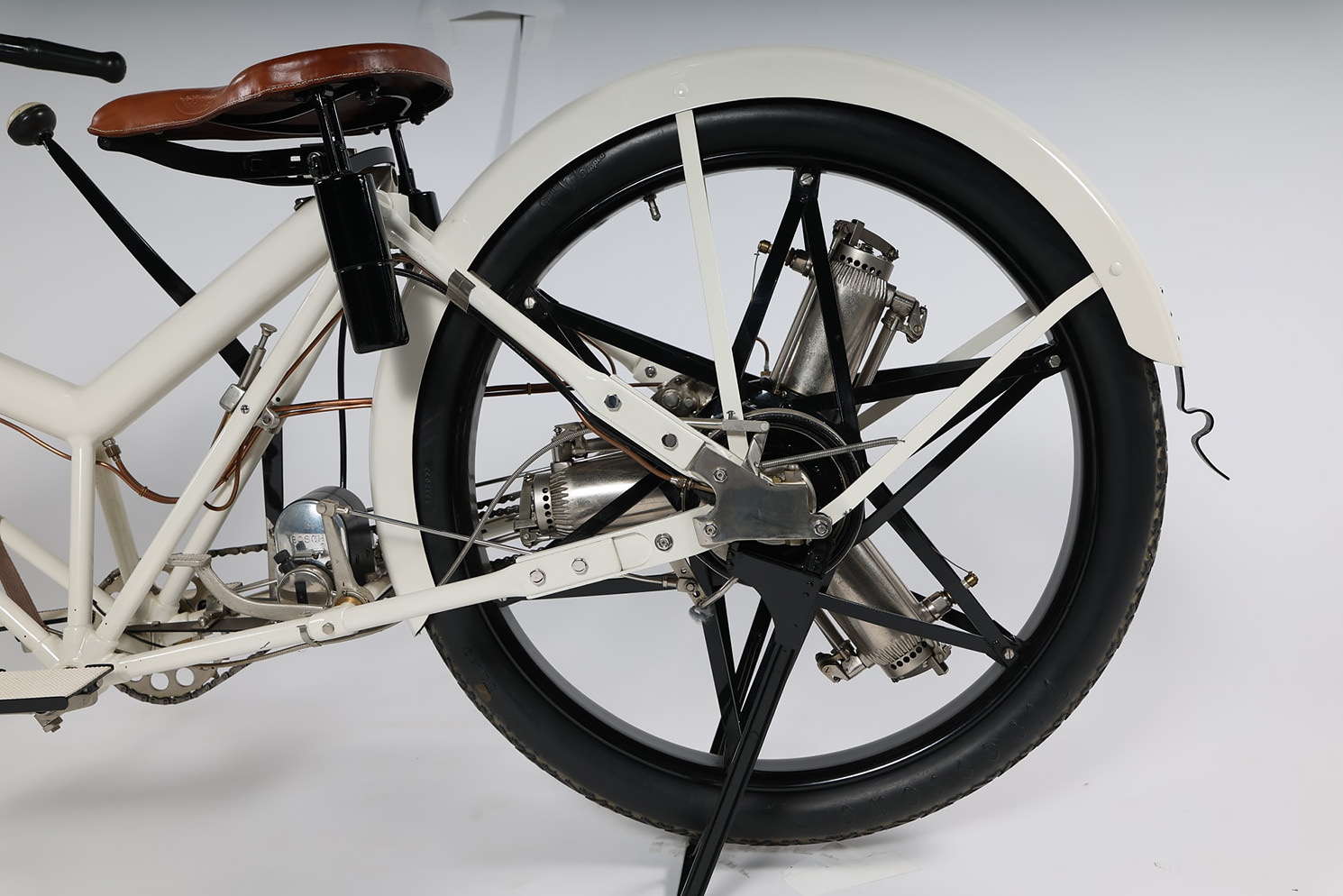

Australia’s Gasoline Motor Co. turns a Sportster into a fetching Harley XR750 replica, South Korea’s Crazy Garage transforms a Ducati Hypermotard, and the embattled Austrian marque KTM updates the razor-sharp 790 Duke. Then, in Las Vegas, a rare and unusual motorcycle with a wheel-mounted radial engine is about to go on the auction block.
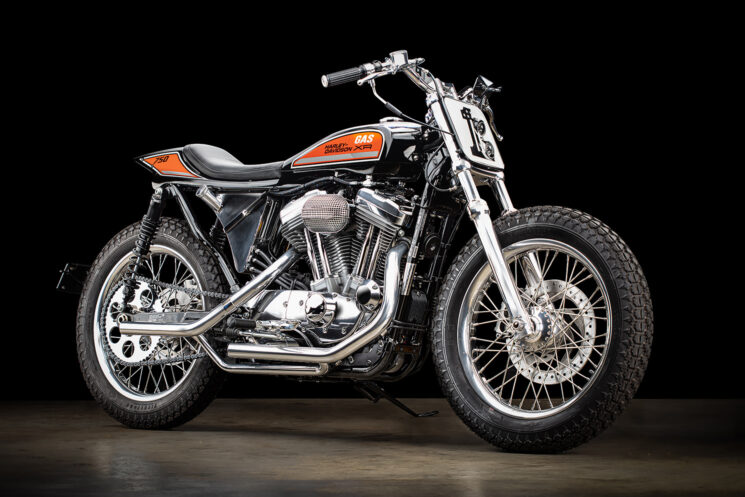
Harley-Davidson Sportster 883 by Gasoline Motor Co. Made famous by Evel Knievel, and known for its domination in American flat track racing, the Harley-Davidson XR750 is arguably the most recognizable Harley in the world. It’s little wonder then that it’s regularly used as a style reference for custom-built Harleys—like this Sportster from Gasoline Motor Co. in Sydney, Australia.
Gasoline Motor Co. has built a Harley XR750 replica before—so when a customer approached them to create another, they jumped at the chance.
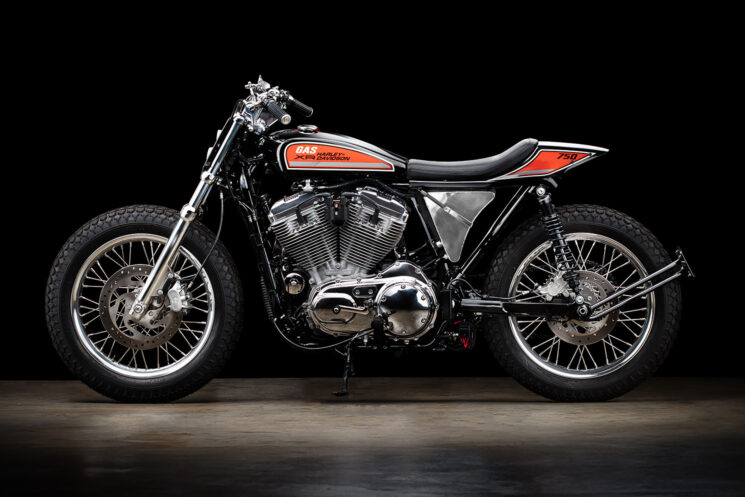
Starting with a modern fuel-injected Sportster 883, Gasoline cut things away until they were left with just the engine and frame. A Ceriani-style fork went onto the front, along with a custom numberplate and an LED headlight setup. YSS sent over some 15” rear shocks, and a pair of flat track-appropriate 19” spoked wheels were bolted on.
Gasoline converted the 883 belt drive to a chain for even more old-school charm. An HHB sprocket locker was fitted, along with a Vance & Hines fuel pack, an S&S Cycle air filter and a set of custom-made slash-cut pipes.
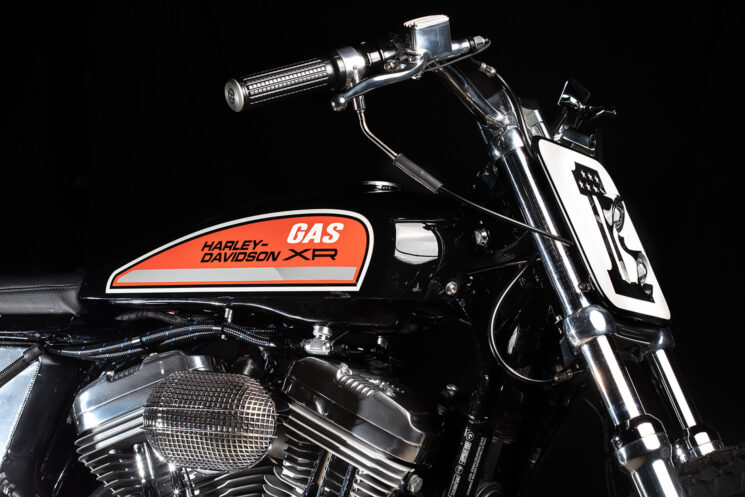
A Phil Little fiberglass tank was fitted, with a custom external fuel pump and regulator to run the EFI system. Even though the bike was rewired with all the new parts, it still retains the ECU, ABS and even the HD immobilizer. The seat is also fiberglass, sitting on a heavily modified rear subframe and a custom oil tank that was made to match the original XR750.
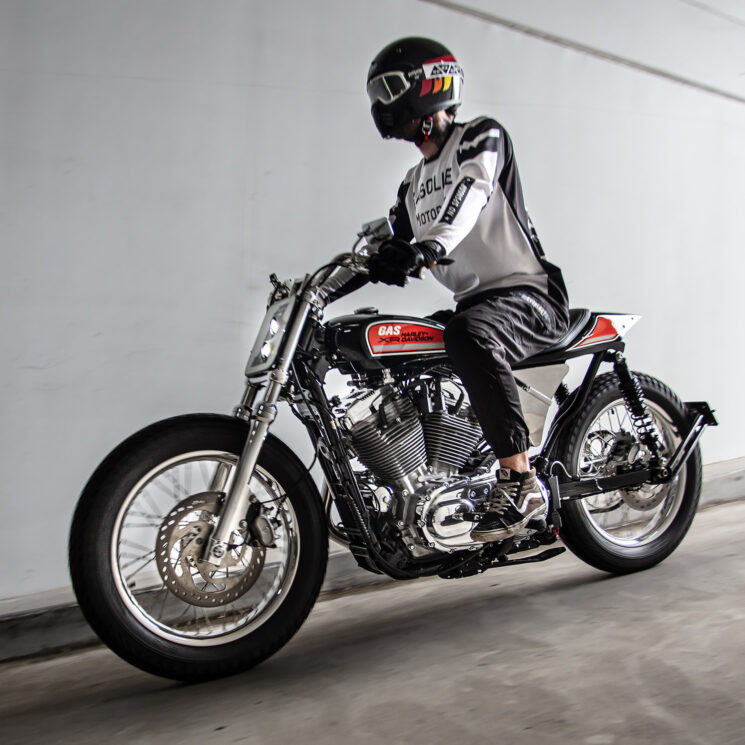
The handlebars are from Sydney’s Kansai Giant and are adorned with Motogadget switches and grips, Kustom Tech controls, and a Prism Supply single-cable throttle. A mini Motogadget speedo sends data to the rider from the handlebar clamp. Kellerman Atto indicators sit at all four corners of the bike, chosen for their diminutive style.
A classic Harley XR livery rounds out this vintage, yet modern, custom street tracker in style. We can’t think of a Sportster we’d like to own more. [More]
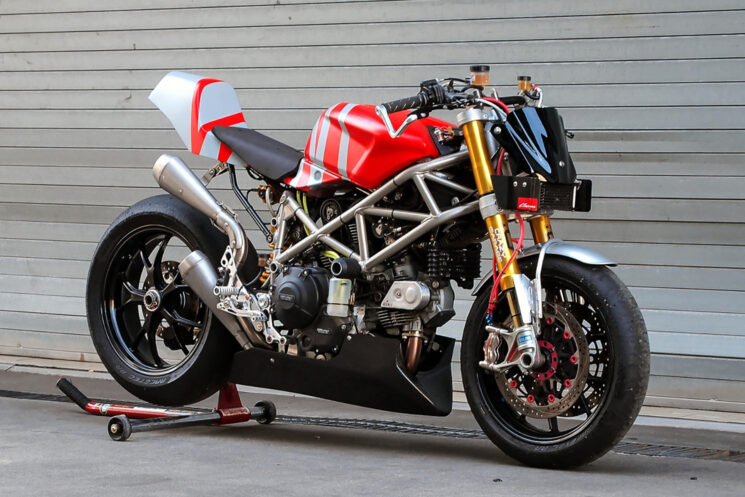
Ducati Hypermotard 796 by Crazy Garage When Chi-Hyun Kim from South Korea’s Crazy Garage was on the lookout for a lightweight, aggressive Ducati he could turn into a track bike, he found a 2011 Ducati Hypermotard 796. Since the 796 is more than 25 pounds lighter (and makes only 9 horsepower less) than the Hypermotard 1100 from the same year, it seemed like the better pick for track use.
Not one to keep things stock, Kim completely transformed the oversized supermotard into an extremely aggressive track-only machine. To kick things off, a set of Öhlins forks was installed with the Hypermotard wheels wrapped in super sticky Metzeler Racetech slicks. Sunstar brake discs, upgraded Brembo calipers, and a Brembo master cylinder slow the bike down.
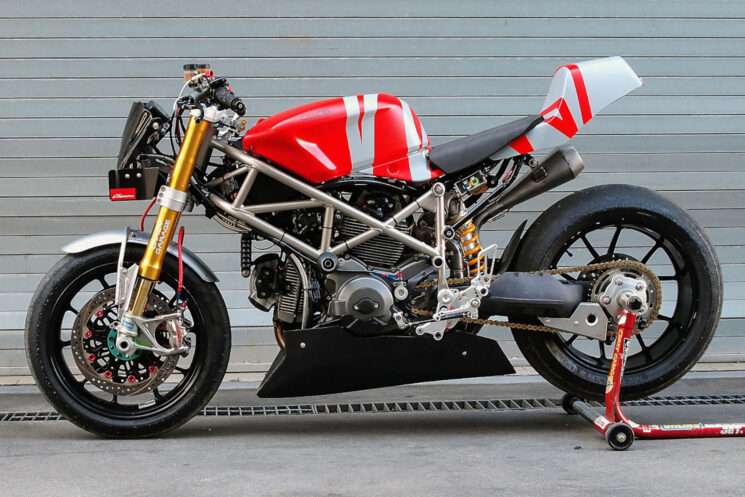
As a fan of 80s AMA superbikes, Kim chose to fit an oil cooler at the front with a small bikini fairing used as a number plate. A custom front fender was made to complete the new front end.
The bike still has handlebar risers, but low Renthal bars were fitted for improved ergonomics. The fuel tank is from a Ducati 1098 and the rear subframe was made from scratch to suit the FRP single seat unit. The tank shape, seat, and rear-set pegs lock Kim into a full race position.
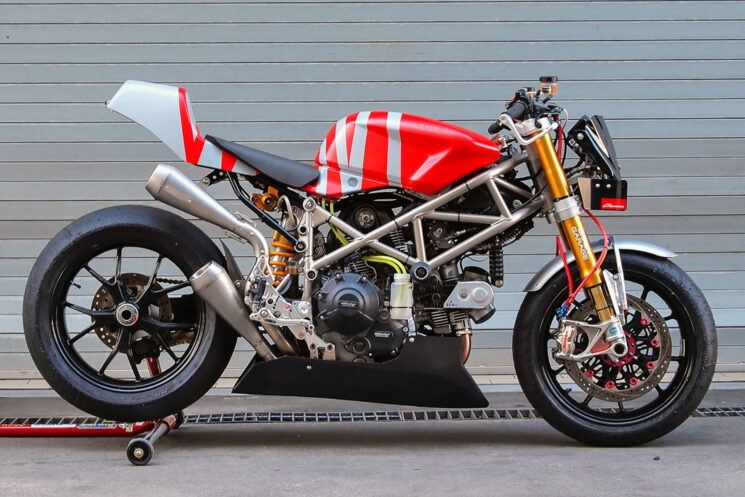
Kim made the crazy exhaust by hand, so it’s a shame that most of his artwork is hidden by the carbon fiber M Factory belly pan. The intake was modified to increase airflow and fueling was adjusted using a RapidBike EASY unit. The rear shock is another Öhlins item—Kim modified the linkage and mounter the remote adjuster under the seat.
To shake down the bike near the end of the build, Kim and his friends entered a seven-hour endurance race held in South Korea. Not only did the bike perform flawlessly, but they won their class. [Source]
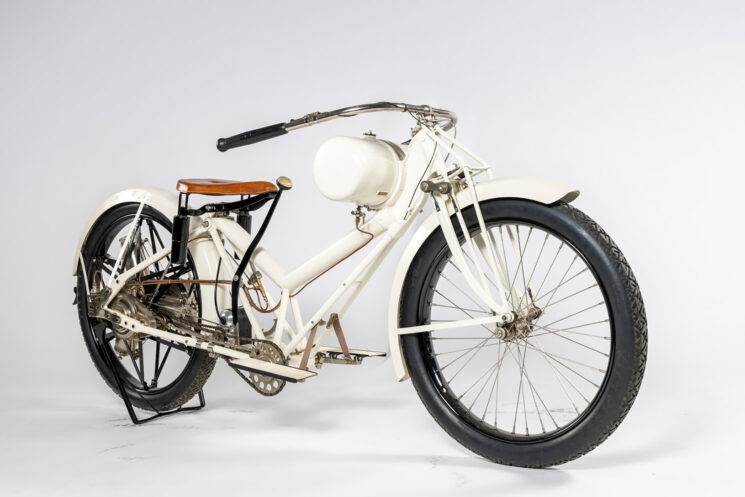
1915 Williams Clady motorcycle Despite the fact this fat-framed bicycle contraption looks like a modern e-bike beach cruiser, it’s actually over 100 years old. And no, it’s not electric—the large fuel tank between the handlebars sort of gives that away.
This is a 1915 Williams Clady motorcycle and is one of four prototypes built. It’s only the only one in the world that is currently accounted for. But that’s not the only amazing thing about this bike—if you haven’t already noticed, there’s a rotary radial engine mounted inside the rear wheel.
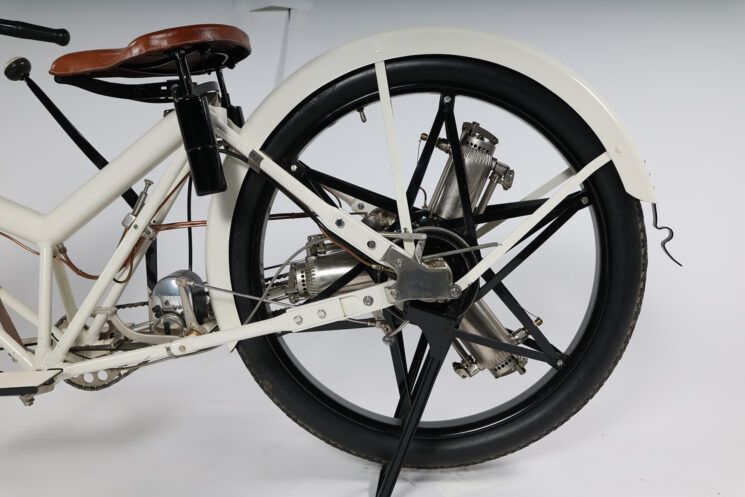
Back in 1915, rotary radial engines were more commonly found in aircraft. Thanks to the way the engine rotates around the crankshaft, they were perfect for propellers in planes and early helicopters. This particular radial engine has a total capacity of 873 cc and pumps out around 10 horsepower. (Only Moto Guzzi would accept figures like those these days, but it was pretty good back in 1915.)
It has a two-speed transmission, a Bosch magneto ignition, and a footboard starter system linked to the engine with a chain drive. The fuel tank is mounted at the front of the bike, and the large-diameter sections of the frame tube house the engine oil (like an old Triumph Bonneville).
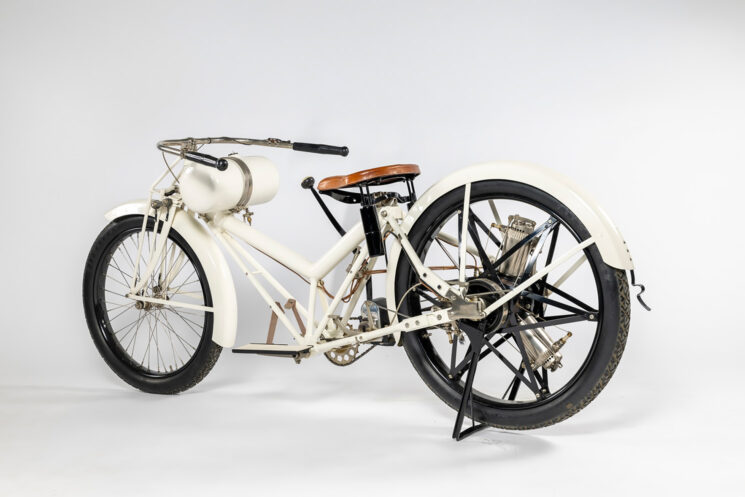
The wide handlebars have a twist-grip throttle, and the front end features leading-link suspension. The saddle-style seat is sprung to smooth out the ride from the rigid tail.
If the Williams Clady tickles your fancy, you’ve got until the end of the month to get your affairs in order. It’s going under the hammer at Mecum Auctions in Las Vegas with no reserve—but because of its rarity, design, and incredible condition, we reckon it will go for a pretty penny. [Source]
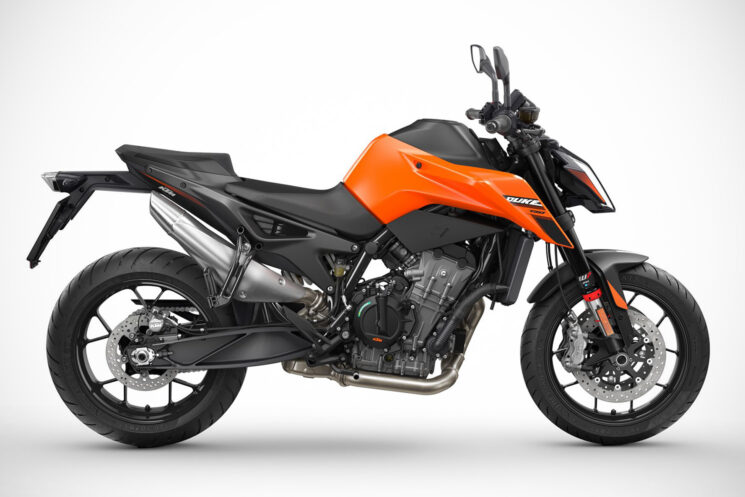
2025 KTM 790 Duke KTM is on the ropes right now, but that hasn’t stopped them from releasing model updates with the enthusiasm of a company on the up. This time, it’s the KTM 790 Duke that gets a slew of upgrades for the new year—including new tech and EURO 5+ compliance.
The Duke’s eight-valve, 799 cc powerplant goes largely unchanged, churning out around 103 hp. At 169 kg [372.6 lbs] dry it’s extremely light—but, because it’s a KTM, the seat height towers at 825 mm. (An optional seat drops the height to 805 mm.)
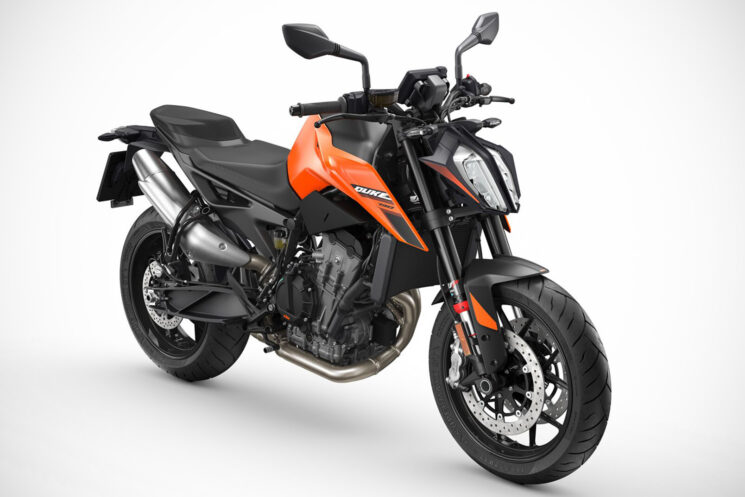
The headlight has been updated to match the current crop of KTMs, making it the only real aesthetic change over the previous generation. The WP APEX forks and rear shock have remained, with steering geometry still keen enough for the 790 Duke to maintain its ‘scalpel; nickname.
The light and agile handling is now paired with a new 5-inch TFT dashboard which replaces the old 4.5-inch unit. The new dash brings new functions, including a telemetry screen, anti-wheelie modes, and a selection of riding modes. (Which of those functions are accessible out of the box will depend on KTM’s idiotic paywalls.) The switchgear has been improved for more intuitive use and is now backlit too for when the sun goes down.
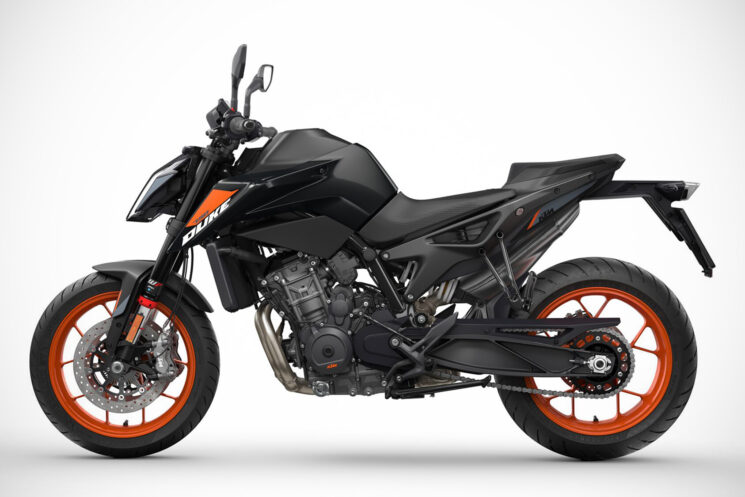
To increase the 790 Duke’s global reach, KTM also offers an A2 license-compatible version for Europe. Power is bumped down to around 93 hp, but the 87 Nm maximum torque figure stays the same.
Given that the 790 is KTM’s base model twin-cylinder Duke, the orange and black liveries it comes in are understated—and, dare we say, a little bland. That said, we’d probably pick the black one with the orange wheels. [KTM 790 Duke]
